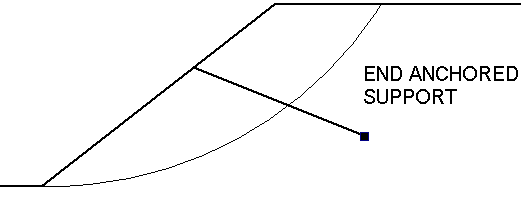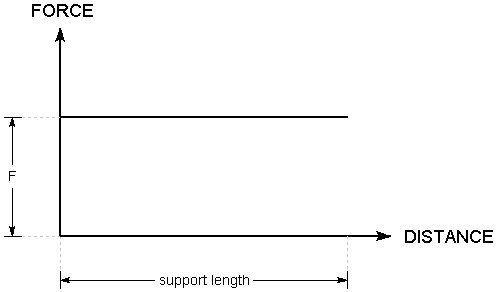End Anchored
The End Anchored support type allows you to model a simple end anchored support system, such as mechanically end anchored rock bolts, or deadman anchors.

Anchor Capacity
The Anchor Capacity entered for an End Anchored support type, represents the maximum load which an individual anchor can sustain before failure. Generally, this will be the pullout or failure load of the anchoring mechanism, however, it could also be the tensile strength of the anchor, or the strength of the plate assembly on the slope surface, if either of these capacities is less than the failure load of the anchoring mechanism.
Force Application
For End Anchored support, the default method of Force Application = Active, because some tensioning of the anchors is usually applied. See the Force Application topic for a discussion of the significance of Active and Passive support force application in Slide3.
Force Orientation
For End Anchored support, the orientation of the applied force is always PARALLEL to the 3D orientation of the anchor.
Implementation of End Anchored Support in Slide3
With the End Anchored model, the load applied to the sliding mass will be constant, regardless of where a slip surface intersects the length of the support. The applied load is simply equal to the Anchor Capacity:
F = T
where:
T = Anchor Capacity
The Force Diagram for an End Anchored support type is simply a horizontal line, representing a constant value of applied force regardless of where a slip surface intersects the support.
